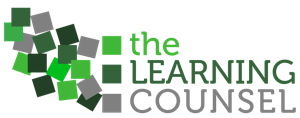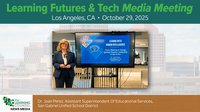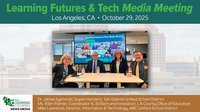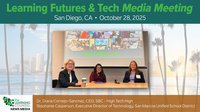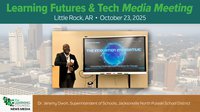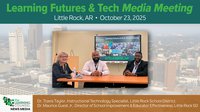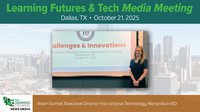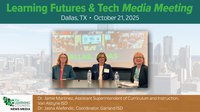This is Chapter 7 from the book, The Human Singularity
Many people are trying to define what humans have for intelligent characteristics that machines do not. Unfortunately, they are mostly people who have no real relationship with technology and it’s every-changing parameters. As technology delves into the realms of biotech and plasma, there is a need to be very specific about what exactly is different, while also being real to people without long discussions about quantum mechanics or algorithms.
Those of course must tie back to what life force is, which is back to the other-dimension or single-electron theories, both of which lead to the same overall conclusions about intelligence. Life is still trying to survive.
Here is a summary framing why certain characteristics are above machine intelligence, with more detail in the following chapter. The “why” is critical if we are going to cause more of these human traits.
Keep in mind as you review these that the human mind thinks first with time, the only constant-inconstant. This is a major underpinning of how humans are different.

Creativity/Free Will
Creativity could be said to be first bringing some shapeless open-mindedness, throwing some chaos into a mental construct, and then generating something new.
Machines can also be generative of new ideas, but they are not able to do so to the degree of shapelessness that life-force can, which can enter matter to change it. Life is in you; it is also tethered to or lying dormant in a seed you plant deep in the ground that when watered and given sunshine rearranges dirt to build a tree.
Another way to say this is that humans are chaos-bringers first before redesigning something. Without pointing out the existing chaos of governments, poverty, misery and generally bad conditions because anyone can see those for themselves, let’s just say that humans do indeed create chaos. Or maybe we could say they create randomness. They break up the routine and immobility of raw matter, rocks, air and water spinning through space on giant round balls called planets. They get in and make something out of things, quarrying stone and chopping down trees, and then erecting buildings and growing gardens and being very busy.
Humans even build omnidirectional chaos intentionally. The internet, free speech, freedom of movement, freedom of affiliation, and freedom of religion are indications humans create
chaos for the greater expansion of humanity. History is a strong indication that we need chaos and unexplored terrains, not total order and domination dictated from one viewpoint.
The behavior of other life forms in swarming like bees, procreating rapidly like rabbits, entering our human bodies as parasites and other invasiveness into the physical universe is very telling. Chaos creation is an aspect of life trying to take over the physical world and wrestle it into what it wants. Life is creative.
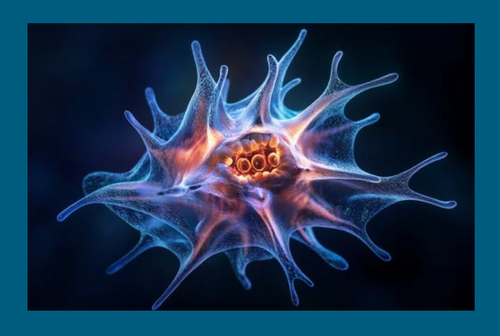
Another aspect of life being creative is that life takes any shape, as if it is itself shapeless, and fills any space the way water will fill any container. Lower forms of life like amoeba appear to take the simplest of shapes and behave like playdough or a soap bubble, able to change shape and move around without legs. A study titled “Evidence of conditioned behavior in amoebae” demonstrates that amoebae can modify their movement in response to external stimuli, effectively moving away from threats.15
In that experiment, researchers used a controlled direct-current electric field as a conditioned stimulus and a specific chemical as an unconditioned stimulus.
The amoebae were capable of associating these two independent past events, leading to persistent locomotion movements that lasted for an average of
forty-four minutes. This indicates that tiny and brainless amoebae can learn to move away from certain stimuli perceived as threats.
Does all of life do this? Humans sure appear to move away from perceived individual threats, but do we as a body, or at least large percentages of populations, also do the same thing?
If in an unthreatening environment, do we just flourish and takeover and grow? Observation of individuals would say yes. Observation of humans in sub-optimal conditions lacking food and other means appear to have more babies than cultures more advanced with their lower hierarchies of need taken care of. Insufficiently feeding cattle also causes higher fertility. Higher human cultures move on to invent things and conquer other aspects of life, like they’re intent on straightening out everything about everything and moving even higher. Those remaining in sub-optimal environmental conditions, solve by volume of new lives thrown at their persistent problem. It would seem the mental computation is to throw at the problem of living sub-optimally even more living, eventually rising to another frontier and then one above that and so forth.
More advanced cultures hunger for different sorts of chaos to feed them. They create a different sort of chaos with different sorts of discontent.
It could be said that chaos enablement is life, enablement because it draws life’s attention and energies. Total chaos also creates death. The difference is in the degree.
Hand in hand with creativity is Free Will. Free will means we can change our mind for no reason. We can operate with no rules at all.
Humans act as individual units of consciousness interacting with life from their own experience and personality. Apparently the more individual they perceive themselves, distinct from others, the more intelligent and able they are in life. We call this confidence or will. It is stronger the more individual the person feels. Free will is best defined as the ability to be just one individual, yourself.
Free will is a quality science cannot account for, cannot make a model to represent. Free will is unpredictable.16
When human minds are confused with the intentions of others, with other’s opinions and
15Source: pmc.ncbi.nlm.nih.gov/articles/PMC6695432/?utm_source=chatgpt.com
data, it derails making their own determinations, their free will. They can then fail in some way as individuals because they are internalizing outside influence and subverting their own confidence and will. They are subverting the unpredictability that helps define life and possibly the enjoyment of the experience of life.
Since there are already indications that human consciousness is an aggregate dominion over a single body, as mentioned earlier in the section on “consciousness seniorities,” why could there not be a new level of human hive-like consciousness over multiple unconnected bodies, just as there appears to be in some animals and in the sub-minds of bodies? Well, that is a tricky question.
It comes down to the human characteristic of free will.
It is the same question as asking why we can’t control a pile of large boulders with our minds or use the “force” and throw them about like Rey in the Star Wars Last Jedi.
Scientists only recently discovered a rock at the bottom of the Pacific ocean that can make oxygen in the dark, upending centuries of scientific belief — so maybe even rocks are somewhat life-imbued.
Perhaps we can be a Jedi. The only barrier would be how free our own will is versus being encumbered by the will of others, as well as being a singular human — which is essentially saying the same thing.
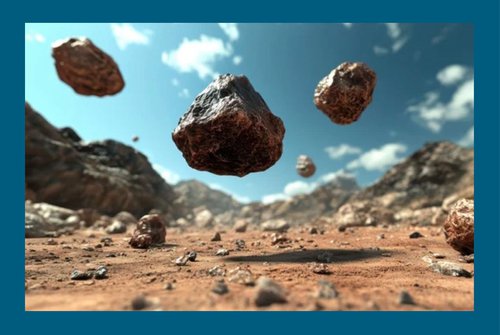
It’s easy to think that lies and propaganda and intentions of others are just ideas, right? Yes, for the mind well- armed to see all extra-limital ideas (generated other than by self) as in fact extra-limital, all ideas coming in could be made harmless. However, we do not survive alone as babies and become highly dependent early in life on caregivers and later many authority figures. We sacrifice our will intentionally as a calculated effort towards our survival. This adoption of other’s ideas is extremely hard for people to let go of as it hardwires the perimeter of our thoughts and builds the architecture of our minds.
Our minds become entangled.
Possibly, the mechanics of what happens is the internal assignment of a seniority in some area of thought to another, making the seniority of this particular human mind now not senior in some respects. That is the pure definition of weakening and possibly subservience.
Picture a mind incapable of pure calculation, always coming up with wrong answers because of hardened nodes it cannot circumvent. It is not arriving at higher level of networked super- consciousness above the individual human that might be useful to find a job AI cannot do.
Instead, it is an agreement with common ideas, a construct of togetherness, a reality which may hold a lot of untruths. These mechanics establish stagnancy eventually, and irrationality.
Total agreement with others’ realities could be defined as total thoughtlessness because all the thoughts are others’ thoughts. The mind becomes an immobile “watcher” of the mechanics of others’ thoughts interacting with each other. Innovation by the original senior consciousness is nullified.
This means that “becoming one with” others is the opposite of making life more of a force forward. Agreement amongst ourselves, although mostly self-evidently good, is nevertheless our eventual jailor. This is true from the pyramidical-bureaucratic scheme of consciousness evident in either the life-force idea or the “you are an electron” idea. What would be necessary is a fluid super-seniority-consciousness, not a melding into “one.”
There have been attempts at “melding into one” the tiniest particles of matter at the Hadron Collider and others on Earth, but what gets produced instead is bursts of energy and new particles. Plus pride in naming smaller neutral currents and the even tinier particles.
16Source: Proceedings of the National Academy of Sciences (PNAS) on Free Will. pnas.org/doi/10.1073/pnas.1010609107
The failures to “meld” matter and life-forms into singular units is a lesson on many levels — including socially and culturally. It may be the entirely wrong direction.
Until we backwards engineer where the ideas from different groups and their frameworks came from, and project their evolution towards some end, we cannot know, for example, that mixing of cultures is “good” because we are potentially collapsing two or more experiments of life. It might be we are trying to cross a banana with a chicken, and in the process we are subverting an eventual world where bananas support every nutritional need and never go bad, and chickens lay eggs the size of cars. We don’t know. We
just want to mimic what matter itself does and that is to clump together, as scientists discovered long ago and talk about endlessly as “dark matter” establishing the clump- together effect and acting as the scaffolding for visible matter and gravity to form galaxies and larger structures — the Big Crunch.
We could instead at least try to see what happens when we go in the opposite direction. In terms of our creativity, that would mean education which does not indoctrinate but involves students in direct observation and drawing their own conclusions.
Creativity is an enormous weapon against any AI takeover. It means there is a strong indication that we will always break out of being made to become too regimented, mere cogs. We will always fight any overly strict bonds. We have an urge to bring order but not to be it, to permanently become a thing, mindless, experiencing a nominal, narrowly boxed run at life with no way to dream. Our essence as a non-thing trying to be a thing, our ability to actually become any form of matter and any space, may in fact be the very definition of “dream.” Being a non-thing is what makes us creative, drives our need for identity, gets us into all sorts of wonders and troubles.
It is for this reason that an AI singularity, a central machine mind creating a complete authoritarian dominance, would be doomed to entropy and loss of its life-force slaves as soon as it suppresses enough of the available life force, which need not be embodied in humans only. There is no predicting how life would retaliate if it has no avenue for expansion.
You might think it strange that an earlier chapter noted that humans are machines in certain ways, and now there is this other opposing thought that they are creative chaos and randomness. Study again the elements of thinking and it will become clear. It is we humans that are a threat to AI.
Cognition
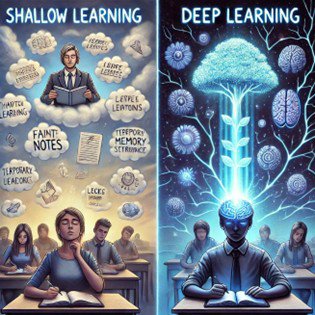
Humans can learn and in so doing, are changing their mind. Cognition is an action being taken. The person now “knows” something. Knowing things changes thinking fundamentally. Machines cannot change their
fundamental rules, although they can program themselves limitedly. Only when they are allowed to change their own programmed rules will they be considered sentient.
Just like occupying the body, learning is apparently the imbuing of some of one’s life force into information one is trying to learn. We call that putting attention on it. Another way to describe how we gain knowledge is that the human mind “occupies” the information and “owns it,” so to speak. This is particularly true of environments, which humans can recall with dimension and not just as flat images. Possibly the invisible life force is extending out beyond the body to fill spaces metaphysically. This seems probable given the “other dimension” theory and observations of life force occupying many different forms already. The opposing single- electron with consciousness seniority theory might be using quantum entanglement for the same capability.
To “own” information would obviously be easily interfered with if the learner sees emphasis on the fact that someone else really owns it. Their willingness to be the new or co-owner may be inhibited merely because they think that someone else is doing a fine job and has it covered so they themselves really don’t need to own it.
One could say that above learning is knowing. Knowing is apparently a perpetual state of awareness that needs no description or recall of specifics that led to the knowing. Given the main human mathematical function, it might be possible to reach knowing immediately without formality, with no instruction at all. Knowing without data could be by deciding
to be in a wide-open state of encompassing all elements and all life force and not at the moment being only a unit of life force – knowing by being. Conversely, the quantum theory
of entanglement could help explain how a single electron exactly duplicates data to the point of knowing it even from a distance.
Other cognitive psychology concepts like surface learning vs. deep learning and context- dependent memory are explained better through understanding consciousness seniorities and life force or single-electron quantum entanglement.
Surface or shallow learning gets data by copying another’s ideas and making a non- permanent tag. This happens because students grant teachers seniority-of-consciousness to “write to” their minds. It’s memorization and mimicry like parrots do and doesn’t mean the data is really learned. Surface learning is a file that the student considers is the teacher’s creation and metaphysically links the tag to the source teacher, so they don’t have to give it any of their own life-force energy or true attention. To recall the piece of surface learning, the student imagines again the teacher and setting to “blow up” the copy in the act of recall. Recalling just as themselves, disassociated from the teacher or setting, is hard because it is not theirs. If knowledge isn’t internalized, it remains externally referenced, much like a cloud storage system.
Deep permanent learning is real knowledge per the “cognitive load theory.” This learning retains consciousness seniority and “occupies” data with one’s own life-force by sweeping attention over it, going “into” data or a space or matter itself, or doing an action with the data.
These build in mind-space a duplicate energized form and keep it permanently by tying off that bit of life-force as one would twist a ballon to have a sub-part when making balloon animals. The thought and knowledge is now a permanent part of the student’s “me.”
The difference is not easy to detect, but surface learning is context-dependent and so rarely retained because copies “belong” to someone else, whereas deep learning goes with you everywhere. Distance and time passing cause surface learning to “disappear,” but sometimes it can be recalled by encountering the person or place that was the source of data. That’s what psychologists call “context-memory.” Proximity and reconnection has the apparency of the space or other person re-energizing the shallow learning memory but in reality you energize it and expand it into conscious awareness because you give back seniority of your own life energy to the other person or space associated with that condensed thought. This means during student testing every teacher should be in the room with students as they test. Familiar rooms will also equate to higher recall.
Conscientiousness
Conscientiousness is a quality of wanting to work and do one’s duty. It’s the wanting to do it that makes us human because that wanting, combined with the human natural desire to bring order then manifests into being organized, methodical, and diligent in approach to tasks and responsibilities. Machines don’t have a quality of wanting; they have electricity and software code.
Conscientiousness is not exactly opposite of creativity, but it is close. It is just orderliness versus creativity’s willing chaos creation in order to bring some new order.
Conscientiousness as a personality trait describes a strong preference for maintaining structure, neatness, and precision in various aspects of life, often manifesting as a desire to keep things organized, systematic, and in their proper place, with individuals high in orderliness finding
satisfaction in well-defined routines and clear systems to manage their environment efficiently. Humans bring orderliness to be conscientious two different ways:
One mirrors the structure of matter in the physical universe, which is interlocking like crystals and pyramidical or tree-branching. This orderliness is patterned and leads to large pyramidical bureaucracies and is most like machines but on the human side.
The other is loose and free flowing like how air, clouds and water behave, although at the molecular level, those are still interlocking matter. This loose, free-flowing order is not
something we think a lot about when it comes to how we live and therefore what we need, or how to use it as an answer to building our future.
Note that the height of free will, a super-seniority consciousness across humans, would by definition be more than one unit body. It also may not need a body at all. It would
by definition have to be free of too many assignments of seniority outside itself and agreements as to what was “real.” It would be free will in the truest sense of both free and will — what we like to say is a “born leader.” There is some science that indicates this is possible for one human to effect through wavelengths because a large number of people in grief at a funeral will often effect grief in people attending who have no real reason to go into deep levels of grief.
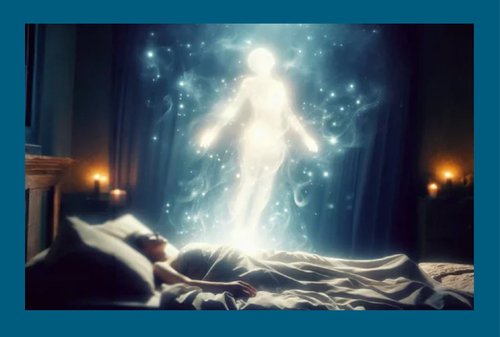
It is probable that attaining any level of consciousness seniority is extending one’s life force for others, which is an active sort of reaching out and imbuing more life rather than shrinking in or melding with other life. It would be an expansive feeling, a feeling of overlapping
others so as to assist. It would be what humans call love. It would be a persisting affinity and admiration. Again, this is the opposite of “becoming one with” others,
but it may have something to do with frequencies and resonance.
To attain a super-seniority-consciousness, even if it were over just large groups in a loose aggregate and not all of humanity, would take an amazing individual emanating love and admiration.
Let’s take another side view of the seniority nature of consciousness because it explains dreams.
Humans and possibly other animals like dogs, dream. Dreaming appears to be a withdrawal of the life force to a sort of distance, that other dimension perhaps. Dreams are a life-units busy work creating hypotheticals or playing with memories. At the same time, the senior
life-force occupying the body lets go of the body to a degree, allowing it to be in a state of less control for a while. Allowing it to relax. Allowing lower life units in cells to have some breathing room without the boss around. Medical science has proven that when humans sleep deeply, their bodies heal faster and seem to run processes similarly to a computer running a refactoring or doing a refresh of software. In addition, the majority of human body growth occurs during sleep, primarily because the body releases the majority of its growth hormone during deep sleep stages, which is crucial for development and tissue repair.
The fact that life appears to reach and withdraw into bodies like the ocean tides going in and out, appears to allow the lower units of cells to “reset” or heal, there is a possible lesson for human organizations.
Dreaming has another corollary to research that could shed more light on human nature and world sciences as well. Life force appears to reach and withdraw in a routine way, waking and sleeping, eating and becoming energetic before losing energy and being hungry again, living and dying being the largest loop of reaching and withdrawing of
life force units. Other major universe processes like the seasons, magnetic fields, and heavenly body rotations appear to be similar actions. The disruption of these larger scale processes may kill larger scale things no differently than a human deprived of sleep or food may die. This may be a key to understanding “evolution,” which doesn’t happen in real time but over centuries and could be a result of death remembered at the genetic level somehow.
This fact that we dream, that we reach and withdraw our life force is a factor that leads to our conscientiousness.
Being conscientious is being consciously ethical, and is the application of the main algorithm that defines critical thinking. The ethical intelligence of any one individual is their ability to withhold from decision or action, which rests on not thinking versus thinking.
Not thinking allows the mind to reason by holding part of the mind in static state while potentially other parts are processing. AI is not currently up to being able to refrain from being on and does not withhold from generation of decisions and actions at will.
This singularly important ability of not-thinking means the individual mind can decide not to do something, which is the simplest definition of ethics and therefore conscientiousness.
It means the human mind is contemplative about repercussions. If ethical intelligence is low, critical thinking will be low. Reasoning will be sluggish or lacking. Since the ethical intelligence is the mind’s core processor.
The ability to not-think is also the difference-maker between good and evil. A criminal does not withhold themselves but goes ahead and causes harm.
This ability is also employed to not even see barriers, and in this respect, it is a skill of selectivity or non-engagement that keeps the mind clear or that “batch processes” only some of what’s being perceived at a time just like machines do batches of data
processing. Without this skill a mind would be overwhelmed easily but instead appears to have a native threshold over which it does not go or uses unconsciousness (leaves) or scant attention when under physical duress.
Like not-thinking, selectivity is what the individual is doing intentionally to keep themselves at some level of life and not another, perhaps a level of living that they think has just enough challenge. Their choices in how they bracket their living experience help define their level of ethics.
Part of being conscientious is the ability to suspend critical thinking. Humans can go on trust, faith or confidence alone to sustain a mental construct of what they want to have happen. It may be a dream they have to open a donut shop, and they spend hours imagining the machines in the shop, the decorations on the walls, the look of pink-frosted donuts spread enticingly in a glass cabinet for customers. It changes and mutates. Actions in the real world are non-existent or spasmodic. Yet the person believes in this as something in the future that may happen. Belief and dreams may be what does make things happen via mechanisms of life itself that are little understood.

AI does not have a mechanism to hold continuously ill-defined dreams because it is built to create definitive final outputs. It can give advices on how to incorporate, how to find a building, it could write marketing and run the account books, but it won’t feel a smile and imagine the smell of coffee wafting out the door of the shop.
Many religious people cite prayer or meditation, often the act of explicitly naming desires and goals for themselves or others, as causing actions to occur in the physical world. They say they have seen and lived having their prayers answered. Non-religious people consciously or unconsciously make wishes and dreams all the time as well. Many go through life believing things that build their path forward minute-by-minute without their conscious thought.
That’s suspended critical thinking.
Here’s a theory of how dreaming and having belief may in fact be what causes reality:
Consider life-force units, the human individual mind, are static with no-motion and no-substance, invisible, but with a positive charge, and there is an opposing entity of “all- motion” negatively charged. That’s like being an appliance plugged in to get electricity from some central electrical plant. The “all motion” may well be a deity, an invisible kinetic force that is spoken of religiously as “omniscient and omnipotent,” all-knowing and unlimitedly powerful. We don’t know if it is always one type of energy for the life- force unit and the all-motion unit, or it both are a scale of wavelengths. Like emotions, some could feel heavy and negative, others could feel expansive and joyful.
It is the fact of oppositional electrical potential which may actually form the framework and be all of life and everything that happens in the physical universe.
You could say the all-motion entity indicated via the mathematics is the “aether,” the historical “quintessence” and fifth element. Or you could call it the “Force” of Star Wars fame. If you are religious, you already know what you call it.
The difference in distribution across the great space of our universe of positively charged individual life-force units with a negatively charged all-motion entity, would result in an electrical potential difference between any two points.
In electricity, “potential” represents a stored energy already there in the field, ready to do work. It is a concrete physical quantity measured in volts. For an individual human life- force unit, that potential is always there and has actual force that would act on any actual physical object and other life-force human units living in the same physical universe if
it were instigated by stringing a conductive line between the negative and positive and giving it the parameters of grounding. Potentially a human life force unit, formulating an idea in their own mind and adding more and more construct to it, is what is grounding the two opposite charges and creating a safe pathway for excess electricity to discharge into reality, forming actions and matter. Maybe that’s what all of thought is — the design studio of reality. Perhaps this is how prayer works, or our will, or firm decisions and dreams.
Perhaps this is the creation of all of life’s action.
In terms of creating a human singularity, this ability to create unlimited action could be an interesting part of mankind’s mindfulness no matter what your belief system.
Curiosity
The mechanism of a vacuum is what causes curiosity. It’s a nothing-there-when-there- should-be idea. The intelligent human mind apparently abhors a vacuum of any kind and, if finding something unknown, will usually rush to find out. If there is no way to do so, the mind will fill it in with imaginary data.
AI does have the ability to do this, but only when it knows there is no data there and it needs to be put there. It will not write over existing data without a specialized program that knows it is coincidentally erasing what was already there. The human mind may be only missing information that does exist somewhere but cannot wait to find it. It has to do something to manage the curiosity instantly. This uncontrollable urge is also the genesis of creative imagination.
The act of using our imagination to fill in a void frequently goes on when we know only a fraction of what happened from some gossip hint or some partial script or movie without the full plot. We will naturally sketch out what we think is the story from scant data. The only other options are ignore it using our ability to withhold and not-think, and even then we mask it with some overriding label and withhold investigation to fill the vacuum for a reason. We always at least stick a label on it. Sometimes this “masking” is what we do when we are being loyal and non-judgmental, a more ethical thing to do actually than make up the whole story of things. This can be like making an allowance for a loved one without all the facts after becoming aware of a mishap. “Well, it’s my brother so he didn’t do the crime.” It can also be labeling an unknown as “unknowable” to shut off curiosity.
We stay uncurious by masking and labeling vacuums all the time like saying to oneself things like “I’m just not a math person,” and thereby cutting off any route to knowledge from the subject of math.
The only reason our minds would do this is having been taught it could not be curious about something. It might be “not cool,” or a teacher could present the subject without first clarifying complex new words or symbols and so creating a prohibitive cloud of confusion that closes the minds door. Or it’s frankly vastly boring or in a form modern kids aren’t used to. Another way would be to give the mind too much all at once with no stair-steps to understanding. Another way would be to let the mind struggle along too long with wrongly understood foundational words and concepts. The mind could have also been taught to “stay in its lane” with overwhelming distractions such as television and social media.
It may also be that the instigation of curiosity and imagination is the clean presentment of a vacuum. Pristine wilderness has long called to human minds as something to be explored, mapped, conquered, owned.
The reason a vacuum causes curiosity is that it so closely resembles life itself, which is a naked nothing, invisible and a “zero” of mass, just like a vacuum. Life’s urge to survive or continue is not just as self, but for the whole of everything. Encountering a vacuum is like a missing puzzle piece to a human being — it’s an embarrassing hole in the matrix indicating they are inadequately “covering” that area and failing at surviving.
Good teaching, then, could be subject areas offered simply with an initial goal for the mind to “fill in.” Breadcrumbs or frameworks but not the whole information. Straight up just telling of information would be a way to “close the door” to curiosity.
Lack of natural curiosity is not evidence of no, low or undeveloped intelligence. It is the mind withholding itself from contemplation of a subject or exploration — which may be a hindrance put there for a reason by the ethical intelligence.
Emotional
Humans are emotional, which is apparently the use of different energy wavelengths, different motions. Emotions and motion are useful in human communication. Machines can emit music and do effect human emotions, but not in an interplay of the same wavelengths currently.
Matching wavelengths appears to be antecedent to being in communication with each other, being in sympathetic “vibration” with others. This may also be foundational to cultures and disrupted by more course wavelengths by machines. Disruption by wireless signals and radio waves have already been proven to disorient and negatively affect bees and birds.
Sympathetic vibration for humans can be emotion experienced when around a large group of grieving people and feeling grief oneself, or being around drunk people, and even though you are not drinking, you feel fuzzy headed anyway, and joyous or at least well content around many young children at play, if one likes children. Humans are like tuning forks and will copy others vibrational wavelength, their emotion, easily.17
This tendency has also been called “mob mentality” when a large group of people become emotional and violent and the mentality “spreads” in the group through the wavelength acting like a tuning fork and getting additional people riled up.
Emotion is apparently tied to actual motional wavelengths.
Telekinesis and telepathy may be another part of emotions, other feats of metaphysical ability in communication. Both areas have decades-old scientific studies that have been largely ignored and could lead to leaps in human skills that have become widely accepted and utilized for the gain of everything. Everything as in not just humans.
17Source: Telepathic Research. pmc.ncbi.nlm.nih.gov/articles/PMC3144613/#:~:text=A%20functional%20MRI%20study%20on,correlates%20of%20telepathy%20in%20Mr
